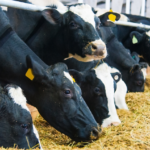
Why Are Free-Range and Cage-Free Eggs So Expensive?
Food has gotten more and more expensive over the last three years and protein sources seem to be some of the fastest increasing items. Even one of the most affordable protein sources – eggs – has seen an increase in price. Along with the general increases across the board, there’s plenty of chatter regarding the price differences for eggs produced in different types of housing systems. There are free-range eggs, cage-free eggs, organic eggs and conventional eggs, and they all seem to have a different price point.
Because of all the chatter about eggs from bloggers like Ann from “Healthy Tasty Chow” and Diana from “A little bit of Spain in Iowa”, researchers like those at the University of Florida, and reporter Jeffrey Kluger from Time Magazine, we wanted to get down to the facts. So, we contacted Dr. Kenneth Anderson – Professor and Poultry Extension Specialist at North Carolina State University – to gain some insight.
Why are free-range and cage-free eggs priced differently than caged hen eggs?
Dr. Anderson: “Free-range eggs are more expensive due to the costs associated with production. Labor costs are 10 to 20 times higher for range hens. They also are typically larger hens that have greater feed consumption than the cage counterpart. The greater activities of the hens on the range and exposure to colder temperatures from fall to spring also require more feed. The hens have lower production due to nutrient partitioning and mortality. Mortality in range hens has been shown to have rates of 20 to 40% primarily due to predation.”
Do fewer producers of non-caged bird eggs automatically increase the cost of those eggs?
Dr. Anderson: “Supply and demand will have an impact on the overall price of the egg depending on the selling points. Typically cage-free and free-range eggs are sold at cost of production plus.”
Will the price of free-range and cage-free eggs decrease if all producers move to those systems?
Dr. Anderson: “No, demand will increase due to fewer eggs being produced because of the lower number of hens and lower productivity rates. For true range production, it requires about one acre for 500 hens.”
You shared your research of free-range vs. cage-produced eggs with us. Based on what you found, is the reason for higher cost eggs from free-range and cage-free systems because of greater nutritional composition of those eggs?
Dr. Anderson: “No. These costs are based purely on the increased cost of production associated with extensive production systems.”
At the end of the day, what is your recommendation for buying eggs?
Dr. Anderson: “Buy what you feel comfortable with. If cost is the issue, buy cheap; if you have a philosophical belief that hens need a more natural environment, then spend the money.”
“Easter eggs” by Susanne Nilssonis licensed under CC BY-SA 2.0.


























